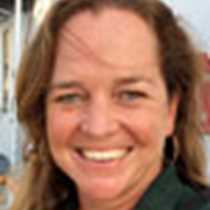Española Island
The Islander travelled overnight to the oldest and south-easternmost island in the Galápagos Archipelago: the small and flat Española Island. We got to spend a slightly lazier morning, as the plan was to visit one of the most beautiful white organic sand beaches in Galápagos. It is located to the west of the island, an area called Gardner Bay, where the beautiful white sand is bordered by the most enticing turquoise-coloured water. The bay is dotted with black rocky islets, and we partook in a variety of activities around them such as kayaking, swimming and snorkeling. There was also plenty of time to walk the beach at leisure and indulge in nature photography of sea lions, marine iguana, mocking birds and lizards – a great morning for one last commune with Galápagos nature.
We lifted anchor after lunch for a short, six-nautical mile cruise to the west of the island, an area called Punta Suarez. Here we made a dry landing at one of the most impressive wildlife spots in the archipelago, home to such varied wildlife as blue-footed boobies (performing their singular mating ritual at this time of year!), hundreds of Nazca boobies, a nesting American Oystercatcher with eggs and many pairs of Galápagos hawks. The latter were a particular highlight today, as one of our naturalists, Franklin, clambered down to the shoreline to fish out an empty gas cylinder that had washed up on shore, and as soon as he brought it up an inquisitive young Galápagos hawk sat on it for inspection and just would not leave – to the delight of all onlookers!
At the far side of the trail, we came to spectacular cliffs and sat and let the scenery soak in, dozens of birds flying overhead with a variety of styles and techniques. All this against the impressive backdrop of an active blow hole: wave action sending plumes of sea water sky high through a narrow fissure in the lava. We eventually had to wrench ourselves away to return on board before dark, leaving a part of our hearts behind forever in this magical place.
The Islander travelled overnight to the oldest and south-easternmost island in the Galápagos Archipelago: the small and flat Española Island. We got to spend a slightly lazier morning, as the plan was to visit one of the most beautiful white organic sand beaches in Galápagos. It is located to the west of the island, an area called Gardner Bay, where the beautiful white sand is bordered by the most enticing turquoise-coloured water. The bay is dotted with black rocky islets, and we partook in a variety of activities around them such as kayaking, swimming and snorkeling. There was also plenty of time to walk the beach at leisure and indulge in nature photography of sea lions, marine iguana, mocking birds and lizards – a great morning for one last commune with Galápagos nature.
We lifted anchor after lunch for a short, six-nautical mile cruise to the west of the island, an area called Punta Suarez. Here we made a dry landing at one of the most impressive wildlife spots in the archipelago, home to such varied wildlife as blue-footed boobies (performing their singular mating ritual at this time of year!), hundreds of Nazca boobies, a nesting American Oystercatcher with eggs and many pairs of Galápagos hawks. The latter were a particular highlight today, as one of our naturalists, Franklin, clambered down to the shoreline to fish out an empty gas cylinder that had washed up on shore, and as soon as he brought it up an inquisitive young Galápagos hawk sat on it for inspection and just would not leave – to the delight of all onlookers!
At the far side of the trail, we came to spectacular cliffs and sat and let the scenery soak in, dozens of birds flying overhead with a variety of styles and techniques. All this against the impressive backdrop of an active blow hole: wave action sending plumes of sea water sky high through a narrow fissure in the lava. We eventually had to wrench ourselves away to return on board before dark, leaving a part of our hearts behind forever in this magical place.




